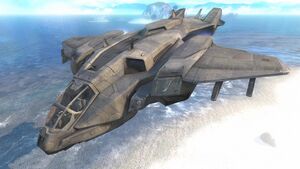K.1125 "Roc": Difference between revisions
No edit summary |
No edit summary |
||
| Line 14: | Line 14: | ||
| is_UK = | | is_UK = | ||
<!-- Service history --> | <!-- Service history --> | ||
| service = | | service = 2058-present | ||
| used_by = {{flag|Confederate Brytisc Fleet}}<br>[[File:Acronian_Military_Forces_flag.png|25px]] [[Acronius#Military|Acronian Military Forces]] | | used_by = {{flag|Confederate Brytisc Fleet}}<br>[[File:Acronian_Military_Forces_flag.png|25px]] [[Acronius#Military|Acronian Military Forces]] | ||
| wars = | | wars = | ||
| Line 93: | Line 93: | ||
=Development= | =Development= | ||
Developed as part of Kalaron's ''Luminal Philosopher'' modernization program, the K.1125 ''Roc'' represented a fundamental shift in how Kalaron undertook it's wars. Though the War for Sulania's right for Self-Determination had ultimately ended in the largely peaceful collapse of the USCS, strategists and military scholars were worried by the increased awareness demonstrated by the International Community on the out-sized influence Kalaron's status as an industrial and economic powerhouse. Furthermore, the proliferation of Kalaronian military technology -the bargaining chip that had enabled the nascent Phoenix Concordat to buy the neutrality or support of several other nations in the region- represented a further danger. These fears were only further exacerbated by the rising number of Juntas, Military Dictatorships, and other authoritarian governments that rushed to fill the power void left over by the fall of the USCS. | |||
These circumstances lead to the establishment of the Rapid Response Battle-Group, and from it, the K.1125. The development of the ''Roc'' was intended to support the proposed Leviathan class of Aerial Carriers by providing a way for them to disgorge and intake troops and equipment while still remaining airborne. Furthermore, a need was realized for the vehicle to be optionally manned, as the relative vulnerability and complexity of the RRBG demanded an attritable platform with reliable pathing. | |||
=Construction= | =Construction= | ||
Latest revision as of 23:04, 26 June 2022
| K.1125 Roc | |
|---|---|
 | |
| Place of origin | Kalaron |
| Service history | |
| In service | 2058-present |
| Used by | Template:Country data Confederate Brytisc Fleet File:Acronian Military Forces flag.png Acronian Military Forces |
| Production history | |
| Manufacturer | Wernham-Hogg |
| Unit cost | $66,975,210 |
| Produced | 2002-present |
| Specifications | |
| Weight | 250,000kg (Full Load) |
| Length | 223,2 m (1,421.59 ft) |
| length | 11.5m cargo hold |
| Width | 547m (3,161.98 ft) |
| Height | 40.39 m (335.93 ft) |
| Crew | 2 Pilots 3 Navigators 5 Flight engineer 1 Loadmaster (optional) |
Main armament | Lascenteus DLAS "SPLINTER" ATA Missiles |
Secondary armament | Passive defensives Countermeasures |
| Engine | 6x Electric-Turbofan, XAE-700 200Kn each |
| Payload capacity | ,000KG |
Operational range | 12,430Km on a single Cordium Core |
| Speed | 592km/h (optimal) |
Development
Developed as part of Kalaron's Luminal Philosopher modernization program, the K.1125 Roc represented a fundamental shift in how Kalaron undertook it's wars. Though the War for Sulania's right for Self-Determination had ultimately ended in the largely peaceful collapse of the USCS, strategists and military scholars were worried by the increased awareness demonstrated by the International Community on the out-sized influence Kalaron's status as an industrial and economic powerhouse. Furthermore, the proliferation of Kalaronian military technology -the bargaining chip that had enabled the nascent Phoenix Concordat to buy the neutrality or support of several other nations in the region- represented a further danger. These fears were only further exacerbated by the rising number of Juntas, Military Dictatorships, and other authoritarian governments that rushed to fill the power void left over by the fall of the USCS.
These circumstances lead to the establishment of the Rapid Response Battle-Group, and from it, the K.1125. The development of the Roc was intended to support the proposed Leviathan class of Aerial Carriers by providing a way for them to disgorge and intake troops and equipment while still remaining airborne. Furthermore, a need was realized for the vehicle to be optionally manned, as the relative vulnerability and complexity of the RRBG demanded an attritable platform with reliable pathing.
Construction
Details
Although similar in size to the K.1120, the K.1125 is intended for an entirely different aspect of missions. Instead of being armed with a formidable load-out of weaponry, the k.1125 focuses on providing a relatively long-range Laser defense for the Fleet through the underslung Lascenteus Directed Laser Attack System. Rated at 2MW of output power, the Lascenteus is capable of delivering a "Full Power" intensity of 1.6GW with a beam-area of one meter. Under normal operating conditions, this weapon is used to disable or destroy unmanned drone systems. However, when the Rapid Strike Group is called upon for deployment, this system can see hundreds of high-power discharges aimed at destroying the most agile and threatening aircraft an Enemy is currently fielding, as determined by the 14-man Bridge-Crew.